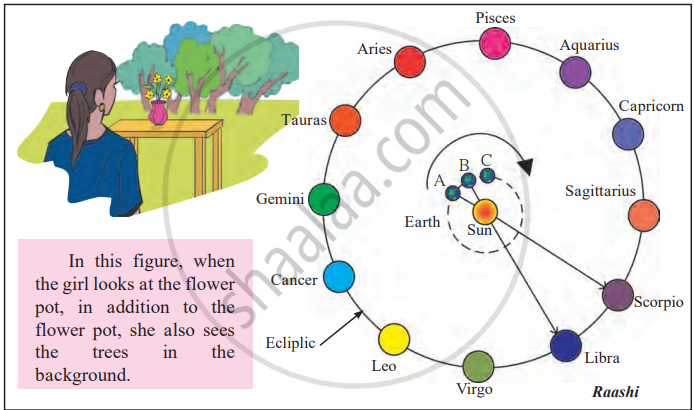1. Saptarshi (Great Bear) Constellation
The Saptarshi constellation, also known as the Great Bear, consists of seven bright stars arranged in a kite-like shape. This constellation plays a significant role in locating the Pole Star (Polaris). The distinct alignment of its stars makes it an important reference point for navigation and stargazing.
Visibility throughout the year:
- February: Rises at 8 PM in the northeast.
- April: Appears on the meridian.
- October: Sets at 8 PM.
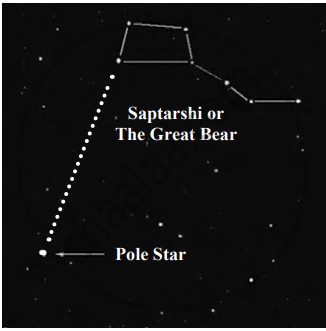
Saptarshi (Great Bear)
2. Sharmishtha (Cassiopeia) Constellation
The Sharmishtha (Cassiopeia) constellation consists of five bright stars arranged in the shape of an "M". It serves as a reference for locating the Pole Star (Polaris), which lies perpendicular to the third and fourth stars in the constellation. Cassiopeia is positioned opposite to the Saptarshi (Great Bear) constellation, meaning when one sets, the other rises. This distinct positioning makes it an important celestial guide for navigation and stargazing.
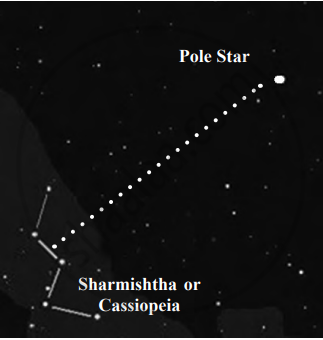
Sharmishtha (Cassiopeia)
3. Mrug Nakshatra (Orion) Constellation
The Mrug Nakshatra (Orion) constellation consists of 7–8 stars forming a quadrangle, with three central stars pointing towards Vyadh (Sirius), one of the brightest stars in the night sky. It has a distinct and recognisable pattern, making it an important celestial landmark. This constellation plays a significant role in navigation and astronomical observations.
Visibility throughout the year:
- December: Rises at 8 PM in the east.
- February: Appears on the meridian.
- June: Sets at 8 PM.
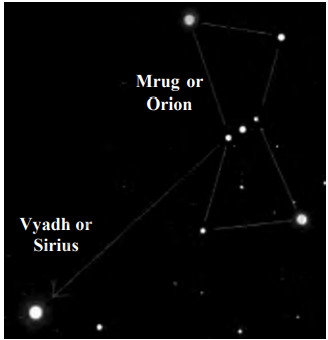
Mrug Nakshatra (Orion)
4. Vrushchik (Scorpio) Constellation
The Vrushchik (Scorpio) constellation consists of 10–12 stars, with Jyeshtha (Antares) being the brightest star in the constellation. It is located in the southern sky below the celestial equator, making it more visible in the southern hemisphere. During April, it can be seen in the east a few hours after sunset. This constellation is notable for its distinct shape and significance in astronomy.
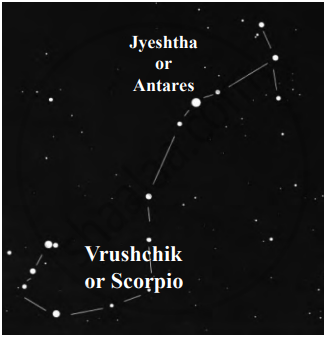
Vrushchik (Scorpio)
